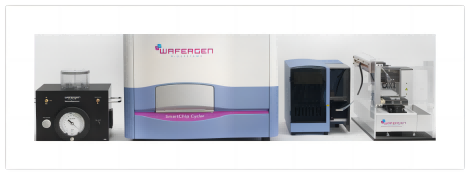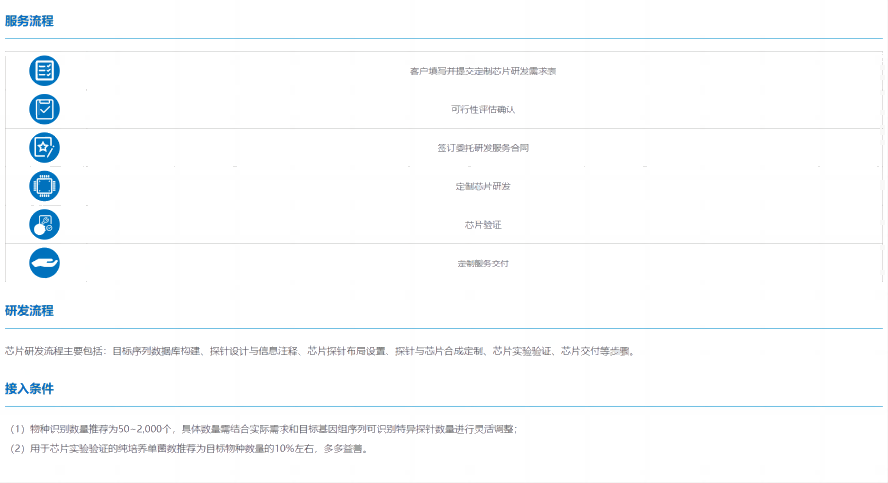

Traditional real-time PCR (qPCR) is commonly used for the detection of key genes and the validation of omics data because it can perform relative/absolute quantification of specific genes in a sample in real time, but traditional qPCR with low throughput, cumbersome operation and high experimental cost has been difficult to meet the increasingly complex needs of researchers. The high-throughput qPCR chip product just makes up for the shortcomings of traditional qPCR detection.
High-throughput qPCR (HT-qPCR) chip quantitative detection technology is to design the corresponding qPCR primers for the functional genes under study, and package them into thin-layer metal alloy nanopore chips to obtain high-throughput qPCR chips. At the same time, based on the SmartChip Real-Time PCR System, high-throughput automatic micro-sampling and gene quantification analysis platform, 5,184 reactions and data analysis can be completed at one time and at high speed, and the target gene detection and quantitative calculation with high efficiency, high throughput, high accuracy and high sensitivity can be carried out on multiple samples, avoiding the shortcomings of the traditional qPCR method such as single, high cost and low efficiency of genetic detection.

High-throughput qPCR chip detection platform


Based on the technical principle of DNA-DNA hybrid chips, Zhongtian gene chip customization service is a scientific research service product for customers to develop specific species or functional gene detection systems, and is committed to promoting the application of gene chip technology in scientific research and environmental monitoring.
Technical principle
Based on the microarray platform, a large number of probes with known sequences are integrated on the same substrate, and the fluorescently labeled DNA to be tested is hybridized to the probe at a specific site on the chip, and then the hybridization signal is detected to achieve rapid, accurate and efficient detection of biological samples.

Chip features:
l Instant detection: the duration of a test is less than 2 days, the detection equipment is small, light in weight, easy to install and use, and can realize the immediate detection of biological samples;
l High sensitivity: it can detect NG-level nucleic acids;
l High specificity: PCR amplification bias is avoided, the data is highly fidelity and reproducible, and the multi-probe coupling greatly reduces the false positives caused by non-specific hybridization, and improves the detection accuracy;
l High throughput: The detection throughput is up to 180,000 gene probes, which can achieve the detection goal of "how fast and how easy it is".
